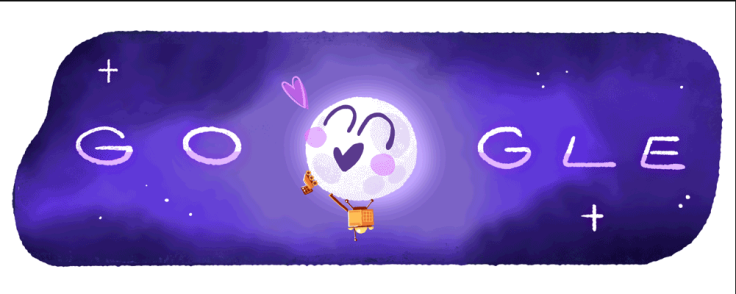Google is joining the world in celebrating India's successful Moon landing.
The tech giant recently published a new dynamic doodle based on the successful landing of India's Chandrayaan-3 on the Moon's south pole to celebrate it.
India's Chandrayaan-3 spacecraft successfully landed on the Moon's south pole on Aug. 23 at 6:07 PM Indian Standard Time.
Google's Celebratory Doodle
Google's logo took a turn for the celestial. To celebrate the successful landing of India's Chandrayaan-3 spacecraft, the search giant published a cartooned version of its logo depicting the spacecraft's orbiting around the Moon to land on its south pole.
The doodle even came with the lunar rover the Chandrayaan-3 spacecraft come with that will explore the Moon's south pole to determine what lies in the region. The Moon will then smile happily once Chandrayaan-3 and its rover are on its surface.
To show that the world celebrates India's success, Google added a joyous and smiling Earth near the end of the doodle's loop. The Earth's appearance also serves as a way to reset the Moon's appearance since the planet completely covers the Moon in the doodle.
Thanks to Chandrayaan-3's successful landing, it is now the fourth country to have reached the Moon following the US, the former Soviet Union, and China. However, it is the first country to land spacecraft on the Moon's south pole, a region of heightened interest for space explorers due to their suspicion that it has frozen water and precious elements.

Chandrayaan-3 Launch & Landing Details
India's Chandrayaan-3 spacecraft has an interesting history. Its name means "moon vehicle" in Hindi and Sanskrit, India's official language and its ancient Indo-European language, respectively, per Reuters.
The spacecraft was built with India's frugal space engineering, which the country made possible by copying and adapting existing space technology and utilizing the abundant highly skilled engineers, per Al Jazeera. These engineers earn a fraction of their foreign counterparts' wages.
Chandrayaan-3 launched from the Satish Dhawan Space Center in Sriharikota Range, Andhra Pradesh, India, on July 14, 2023, days after Russia's Luna-25 lunar mission launch. Because the rocket India used to get Chandrayaan-3 off the planet was less powerful than the US' Saturn V, the spacecraft needed to orbit Earth around six times elliptically to gain speed before starting its journey towards the Moon.
When Russia's Luna-25 spacecraft crashed onto the lunar surface, India's Chandrayaan-3 spacecraft was making good time; it was already looking for a safe landing spot on the Moon's south pole around that time.
Based on the pictures Chandrayaan-3 transmitted back to Earth, former Indian space chief K Sivan said that the final leg of the spacecraft's journey to the Moon would succeed, per The Guardian. As such, it is no surprise that the country's space agency, the Indian Space Research Organization (ISRO), has successfully landed its Chandrayaan-3 spacecraft on the moon's south pole.
The spacecraft successfully landed on the Moon's south pole on Aug. 23 to the cheers of those in the Indian Space Research Organization's mission control. According to Space News, the spacecraft touched down near a prime landing site at 69.37 degrees south latitude and 32.35 degrees east longitude, close to the crater Manzinus U.
The spacecraft and the rover it kept within itself is expected to remain operational for two weeks. During that time, they will run a series of experiments to analyze the mineral composition of the surface of the moon's south pole.
It will also determine if the region does have frozen water - a crucial finding that could dictate if the moon can support a future settlement.
Related Article : India's Chandrayaan-3 Spacecraft Succesfully Lands on the Moon









